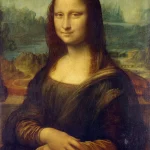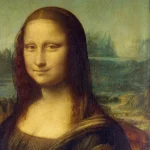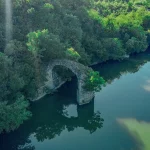The Romito bridge in Laterina, in the province of Arezzo, is the one painted by Leonardo in the famous painting of the Gioconda, according to recent research coordinated by the historian Silvano Vinceti. This mystery has fueled countless disputes over the years and many theories supported have caused an uproar, such as those that refer to the medieval bridge of Bobbio, in the province of Piacenza, or to the bridge in Buriano, also in the province of Arezzo. However, thanks to the collaboration of the cultural association La Rocca and the comparison between current photographs and what is depicted in the painting, this new research has made it possible to identify the real Gioconda bridge.
According to Vinceti, “it is the Etruscan-Roman Romito bridge or Valle bridge”, located in the municipality of Laterina. Currently, only one arch remains of the bridge, but in the period between 1501 and 1503 the bridge was in operation and very popular, as attested by a document found in the State archives of Florence. At that time, Leonardo was in Val d’Arno in the service of Cesare Borgia and then of the Gonfaloniere of the Republic of Florence Pier Soderini. The Romito bridge had four arches, rested on two cliffs and was part of a bypass or shortcut that allowed the route between Arezzo, Fiesole and Florence to be shortened by several kilometers.
Furthermore, there are several correspondences between the Romito bridge, the particular morphologies of the Arno in that stretch of land and what Leonardo reported in the landscape to the left of the noblewoman depicted in the famous painting. Thanks to the images taken by a drone, which made it possible to highlight the presence of two cliffs on the left and right side of the Romito bridge and the sinuous course of the Arno, it was possible to identify the landscape painted in the lower left part of the Gioconda. The virtual reconstruction of the bridge, created based on the width of the Arno in the stretch where the Romito bridge is located, highlights a strong similarity with the bridge in the portrait. The same can be said for the shape and size of the four arches.
Finally, the analysis of the images taken with the drone and of the historical documents has allowed us to identify, with a high level of probability, the complex of earth pyramids or crags in the upper Val d’Arno area that inspired Leonardo, located in the lower left part of the painting of the Mona Lisa.






